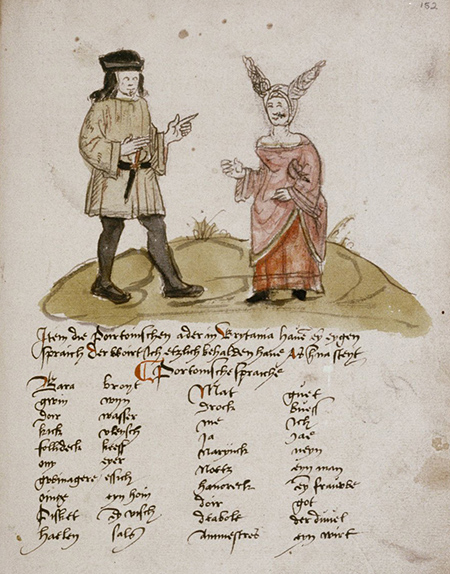
- Born 7 November 1496. Noble Renan Arnold Von Harff, born in 1471 at the Castle of Harff in Bedburg, began his pilgrimage. After passing through Rome, Jerusalem, Santiago and other places, three years later he returned home in November 1499.

He wrote what he saw and heard during the long journey and published it in 1860 E. von Grootte. He went twice through Euskal Herria. He entered Izura towards Santiago de Compostela and, after passing through Pamplona, Puente la Reina and Viana, crossed the Ebro. Back, from Vitoria-Gasteiz he went to Tolosa through San Adrián, as well as Irún.
As Von Harff himself pointed out, “I decided to make a profitable pilgrimage, tranquilizer and savior of my soul [...] but also to get to know the cities, the countries and the customs of the people”. Some see in the attitude of the travelling pilgrim a reflection of the spiritual rupture between the Lower Middle Ages and the Modern Age.
This playful and practical aspect of the journey is highlighted, among others, in Basque, Breton, Slovenian, Turkish, Hebrew, Arabic, Albanian, Hungarian, Syrian, Amaric and Armenian dictionaries. As in the current travel guides, it took as a counterpart the basic practical words and phrases in these languages. The numbers were one in Basque, bij, yron, lae, boss, see, sespe, tzortzey, wedeatzy and hammer. If you wanted bread, water and wine, you had to ask for bread, oyra and arduwa, and to know the price, ask for schambat.
The main proof of the not so jealous purposes of the pilgrim is the phrase that included in all dictionaries, except that of Armenian: “Beautiful girl, come with me to bed.” The payment in Basque is as follows: schatuwa ne tu so gausa moissa. The experts agree on the meaning of the first words, the schatuwa ne tu ojo would be “the girl, you want”. Julio Urkixo and Justo Garate thought that gausa moissa was “short”, meaning “allude” and that the verb (in this case, for example, “use”) would be in the ellipse. For Koldo Mitxelena, on the contrary, gausa means “at night” or “come on”, and it was not clear what the moses was: To bed? At the same time?
Linguists wondered whether Von Harff had failed to get a schatuwa to give his assent or understand the proposal.